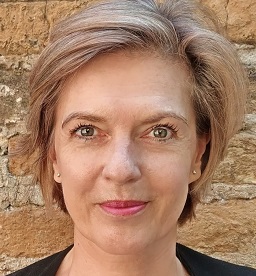What is beyond agile?
In recent years, agility has gone from being a clever strategy for software development to a management mode (“agility as a cargo cult devoid of meaning”). Presumably it is the combination of the pressure for change resulting from globalisation and digitalisation and the need for guidance on how to deal with uncertainty regarding an uncertain future that means that the question of future viability is very often answered with “agility”.
Does agility bring sustainability?
Companies invest enormous sums in agile transformation processes, even though the real challenge – dealing with complexity with confidence – is not mastered. Agility changes things and many elements make sense. But agility does not integrate the liveliness of complexity, so it remains a “reaction to complexity” – in medicine this is called symptom treatment. In addition, agility often creates a lot of new problems, so that some software development companies have returned from agile to traditional methods; they can manage the old problems better than the new ones.
Agile Mindsets
Agility changes organisational structures, processes and strategies. Word has long since got around that this is not enough. Only when mindset and culture, the inner, non-objective dimensions of companies are also agile, does the concept work. This is where the dilemma begins, because changing mindsets is certainly possible, as I explained in this article in the t2informatik blog, but it has two conditions:
- The person has a desire for change.
- The change of consciousness must be brought about from a more complex perspective.
So the inside remains the weak point in all agile projects. Agility requires a change of consciousness and culture, but cannot bring about this change because it requires a different way of thinking.
Agile Teams
Agile teams should take joint responsibility. A great idea if all team members want to take responsibility, are intrinsically motivated, have a clear understanding of their role as well as a well-founded relationship of trust, practice openness, transparency and fairness, are professionally competent and free of egoism.
These are quite a few “if’s” for prescribed self-organisation. The conception of agile teams is based on rational and business management thinking – what a pity that people are rational, but only a fraction of their behaviour results from rational considerations (slow thinking, Kahnemann). The majority of behaviour is based on preconscious reactions (affects), on unconscious patterns, on heuristics (abbreviation) and prejudices (bias).
The blind spot of agility
Participation, sharing of responsibility and co-determination is an important component for satisfaction and self-realisation in the world of work. The prerequisite for this is that every employee is given the right degree of personal responsibility. Agility, however, prescribes responsibility and this is just as ineffective as the concentration of responsibility in waterfall structures. Complexity requires individual solutions and not “best practice”. Agility, however, is an inadmissible generalisation of strategies that requires individualised application.
The old operating system of thinking
The biggest problem of (software) agility is the thinking system on which it is based. Rationality means thinking in cause-and-effect mode. Plannability, security and efficiency are its domains. All three subjects only function to the exclusion of liveliness, by limiting reality to mechanistic aspects, thus reducing complexity.
Solutions to complex problems arise above the complexity level of the problem, that is what cybernetics teaches. So it takes an update of the logic of thought, a more complex operating system of thought, to handle complexity. I call this insight beyond agile.
“If you don’t go against the mind, you can’t get anywhere.” Albert Einstein
Understanding complexity
Approaching complexity is best achieved with a mindset that is aware of how little it actually knows and that integrates a meta-systemic dimension. Openness and mental agility are the most important components for understanding complexity, because things are constantly changing.
Plannable and non-plannable shares
There are approaches that describe the liveliness of complexity as “red parts” which, unlike the blue ones, cannot be planned or predicted. One wants to make oneself robust against dynamics so that planning works.
This can be done if you want to equate life with struggles. After all, the most prominent narrative of our time is that success consists of setting goals, i.e. defining a target state and approaching it in a focused way. If you really only have one goal, for example passing an exam, then that is a functional strategy.
Life, however, consists of many dimensions, interactions, synergy effects, contradictions and paradoxes. In view of this, defining one-dimensional goals is reminiscent of Don Quixote and his fight against windmills.
Instead of insisting on clarity and predictability and letting life tell you over and over again that it does not intend to follow your personal plans, you can expand your logic of thought and understand the nature of complexity.
What does liveliness mean?
It begins with perspective. Living and plannable aspects of life are not opponents facing each other. Plannable, causal aspects are a small part of the big, dynamic whole. Accordingly, thinking should focus on and use liveliness rather than fighting it.
Liveliness includes the following terms:
- the mutability of things
- its uncertainty
- its ambiguity
- the indivisibility of things, their quality arises from wholeness
- its novelty
- uniqueness
- simultaneity
- the emergence of new properties that the individual components do not show
- the integration into meta-systemic contexts
- the holistic structure (all forms of existence have a tendency to merge into more integrated units)
- the butterfly effect (minimal changes in the initial situation produce completely different effects)
- the integration of the subject and his consciousness
None of the above aspects can be handled with thinking in cause-and-effect mode. So mind is the weak point when it comes to complexity.
Transformation – the change of thinking
All problems that arise are the result of a way of thinking. The world is as it is, it cannot be contradictory. Consequently, the key to solving problems lies in changing the way of thinking (transformation).
In order to bring about change, one must find out how to construct a problem. Finally, it would also be possible to accept things as they are. But if this does not succeed, then unconscious assumptions about how the world should be are involved. The system theorists talk about constructions, the Buddhists call it attachment.
It’s almost impossible to come to grips with these assumptions yourself, because it’s the things you don’t question that you take for granted. That’s why you need a metaperspective that others can adopt more easily than you can.
Change should never start by defining a target state, because then you are running after an ideal that corresponds to your current (and soon outdated) level of thinking. The first step is to name the problem and find out how to create the problem. The blockades and resistances that prevent you from thinking differently must be identified and resolved. This process of shadow work makes the unconscious conscious and integrates further aspects into the way of thinking, creating inner wholeness and versatility and increasing the number of options for action.
With the development of consciousness it is the same as with health. Nobody has to drink green smoothies or eat chia seeds to be healthy. It is enough to have a balanced diet and to avoid alcohol and nicotine. Consciousness develops by releasing blockages, by letting things flow. You don’t need a lotus position or avenging sticks for this.
Man has two systems of thought, the mind and the spirit. Spirit is indivisible, is a holistic thinker and transcends identification with the ego, thus overcoming egoism. The majority of humanity does not yet identify with the spirit, otherwise the egoistic, rational age would already have been replaced by the integral or holistic age.
Spirit is the answer to the problems created by the mind. A conscious process is needed to fully exploit this potential. It is worth the effort, because each higher level of consciousness not only solves the problems that remained unsolved on the previous one. It also enables a new level of quality of life.
Sustainability beyond agile
Sustainability does not come about through new methods, but through a new logic of thinking that is appropriate to the complexity of the world. The mind cannot afford this degree of abstraction because it cannot transcend the linear logic of “if-then”. The solutions of the mind (as well as agility) create problems because they ignore the liveliness of complexity.
Complex problems require tailor-made solutions by thinking in wholeness and in synchronicity, these are achievements of the mind. Synchronicity means that inside and outside have to be coherent – that is, in harmony. Agile structures are no better than hierarchical ones if they are not in resonance with the inner states.
Any organisation can become sustainable by dissolving the blockages that prevent enthusiasm and innovation. Individual structures and solutions are needed – not best practice to transform organisations into living systems.
Notes:
If you would like to discuss Beyond agile and the transformation of thinking with Silke Nierfeld, you can easily do so at https://insiderooms.de/.
Silke Nierfeld has published three more posts in the t2informatik Blog:

Silke Nierfeld
Silke Nierfeld is a transformation expert, future architect, philosopher and executive coach. She has spent her life exploring the things behind the things in order to make people's lives better, easier and more meaningful. Her concern is a working world that makes the term work-life balance obsolete and transforms performance stress into performance joy.
Her holistic change management concept is amazingly effective. It transforms companies into sustainable organisations that can calmly deal with the challenges of the VUCA world. The integration of unconscious dimensions of being transforms everyday life from the inside, it is a game changer.
Contact Silke Nierfeld if you want to establish innovation and cultural change in your company - without gruelling change processes.



